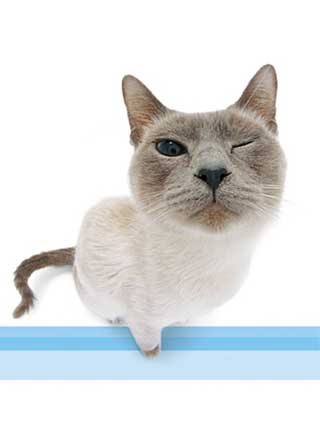How to Tell if Your Cat is in Pain
Cats often disguise the fact they are in pain. That may be because in the wild, cats that appear sick or injured are vulnerable to predators.
Cat pain can be caused by such things as arthritis, dental problems, urinary tract infections, bone disease and cancer. Pain is also common following a surgical procedure.
You are in the best position to look for the subtle changes in behavior that may indicate your cat is suffering.
It’s important to stay alert, because the sooner your cat’s pain is diagnosed and treated, the sooner he or she can heal and resume a normal, happy life.
If your cat exhibits one or more of these behaviors and you suspect it may be due to pain,
notify your veterinary practice immediately.
|
VOCALIZING
|
DAILY HABITS
|
SELF-MUTILATION
|
|
Meowing
Purring
Hissing
Growling
|
Withdraws from social
interaction
Decreased appetite
Changes in sleeping or drinking
Fails to use the litter box
Urinates frequently
Won’t groom or grooms less,
looks unkempt
Sleeps more |
Licking
Biting
Scratching a particular part of
its body
|
|
ACTIVITY LEVEL
|
POSTURE
|
FACIAL EXPRESSION
|
|
Restless
Reluctant to move
Has difficulty getting up from a
laying position
Repetitively gets up and lies
down
Trembles or shakes
Limps
Can’t leap as high
|
Generally lays with feet
underneath
Arches back or tucks in
abdomen
|
Grimaces, furrowed brow,
vacant stare
Glazed, wide-eyed or looks
sleepy
Enlarged pupils
Flattened ears
Pants when at rest
|
|
SELF-PROTECTION
|
|
|
|
Protects a part of its body
Doesn’t put weight on a limb
Doesn’t want to be held or
picked up
|
|
Acts out of character
Growls, hisses, bites
Pins ears back
|
| 